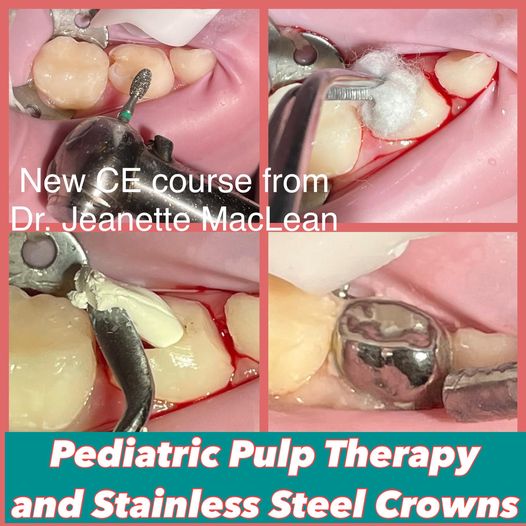Hall Technique (HT) is a minimally invasive restorative option for primary teeth with severe decay and/or hypomineralization without numbing (shots), tooth preparation (drilling), or sedation (general anesthesia/IV deep sedation). HT is an evidence based procedure with 11 randomized control trials and a systematic review demonstrating its efficacy is equivalent to the conventional surgical approach to stainless steel crown (SSC) placement. It originated in Scotland in the 1990’s where general practitioner, Dr. Norna Hall, accidentally discovered that when she sealed her pediatric patient’s carious lesions within a glass ionomer cement under a SSC, the lesions became arrested (inactive) once starved of the carbohydrate substrate necessary to get worse/deeper. Sealing the lesions allows the vital pulp to lay down reparative dentin and retreat/wall itself off from the carious lesion. The procedure is well tolerated by most pediatric patients and is a welcome alternative to the more invasive surgical approach.
Indications
- Decayed primary teeth
- Asymptomatic or reversible pulpitis
- Clear band of dentin between the carious lesion and the pulp on a radiograph
- Newly erupted first permanent molars with severe molar incisor hypomineralization (MIH)
Contraindications
- Decay extends into the nerve
- Pain or infection (Irreversible pulpitis)
- Unrestorable teeth
- Patients where the airways cannot be protected due to very poor cooperation (will not open mouth, cannot stay still for placement of the crown, will not tolerate anything being placed into the mouth like a mirror, gauze, etc.)
Videos
Hall Technique
Knee to Knee Hall Technique
Separator Placement for Hall Technique
Non-aerosol Hall Technique
Articles
https://www.dentaltown.com/magazine/articles/7919/the-hall-technique
https://www.nature.com/collections/gcgsvlmvxr
Continuing Education

The Hall Technique For Excellent Pediatric Dentistry
Pediatric Pulp Therapy and Stainless Steel Crowns
Live, Interactive Webcast Continuing Education Course – 3 Hours Credit
Frequent snacking, not flossing, and unsupervised brushing combined with baby teeth’s thin enamel, enlarged pulp chambers, and tight, broad contacts create the perfect storm for rapid breakdown of tooth structure. Multi-surface restorations can be unpredictable and difficult to place in young children. Pulp therapy and stainless steel crowns (SSCs) are some of the most common pediatric dental procedures, as well as the most dependable for achieving long term clinical success. This course will review minimally invasive options like indirect pulp therapy and the Hall Technique, as well as conventional vital pulpotomy and SSC placement. Whether you are a general dentist that enjoys treating children or a seasoned pediatric specialist, we will review tips and tricks to help increase your treatment confidence and improve clinical outcomes.
Course Objectives:
- Treatment planning for SSCs
- Informed consent
- Pulpal diagnosis
- Pulp medicaments
- Indirect pulp therapy
- Vital pulpotomy
- Hall Technique
- Fitting SSCs
- Suction isolation systems
- Rubber dam isolation
- Tooth preparation for SSC
- SSC cementation
- Post-op instructions
Register here: https://www.aces4ce.com/pediatric-dentistry/


